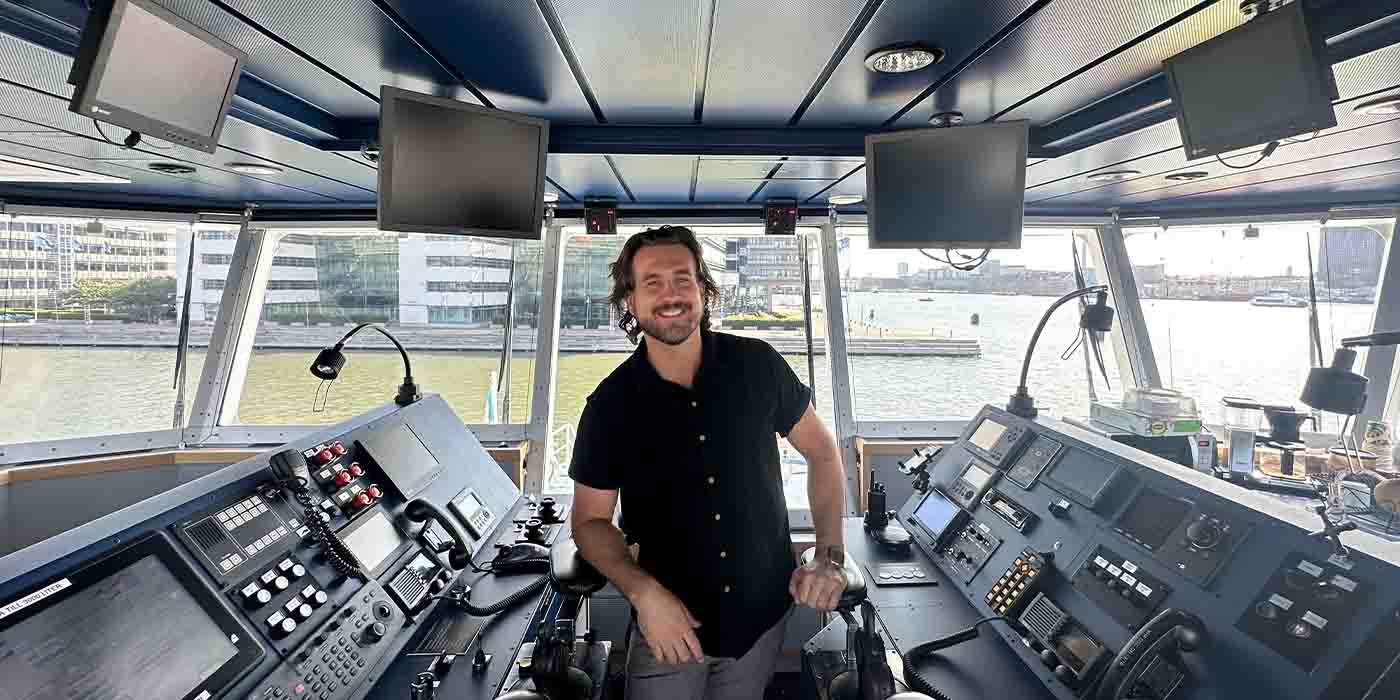
My journey in the electric mobility segment recently brought me to Gothenburg, Sweden – home to the Skansen Kronen, ZEEKR’s design center, and of course, Volvo. Sweden is one of the Scandinavian markets embracing electrification, and it couldn’t be more apparent in its public transit network. This includes 100% electric ferries, of which I got the chance to tour and go for a ride.
During my time in Gothenburg, I got to visit a number of young startups in electric mobility like SiNIX, Uni3, and Mattr Collective, as well as some growing names in EVs like Lynk & Co and ZEEKR. To get from one end of the city to the technology hub many of these business operate from, the fastest (and most sustainable) method is by electric ferries.
I rode Eloise over near Chalmers University’s remote campus, where I was able to climb aboard Elvy – one of the slightly older electric ferries moored for routine maintenance. My ~8-minute journey along the Göta älv River was smooth, peaceful, and most noticeably quiet. Have a listen:
After a short walk around the pier, I met up with my new friend Torbjörn – who really knows his electric ferries and gave me an amazing and exclusive (the city usually doesn’t take citizens above or below deck) tour of Elvy inside and out. Have a look at the outside first.
Climbing aboard Sweden’s electric ferries, Elvy and Eloise
Eloise offered an inspiring voyage, because I got to experience Sweden’s electric ferries in action, and those operators run a tight ship. I was about 50 yards away from the on-ramp aboard when they pushed off without me – better luck next time. Luckily, these electric ferries run back and forth all day, so I was able to catch the next one in a matter of minutes. I’ll hustle more next time.
Alright, let’s get into the star of the show – Elvy. Elvy was built in Denmark in 2019 and has been in operation in Gothenburg since. It is propelled by two 100% electric motors in the front and rear, enabling the ferry to efficiently pull in, load up, and pull out without ever having to turn around.
Those motors (seen below) are powered by a whopping mega-watt of energy, supplied by 45 modules equipped with lithium-ion cells. This is more than enough to power these electric ferries during their 8- to 13-hour shifts – especially since newer boats like Eloise are equipped with even more energy (1.3 MW).
Elvy’s 225 kW motors are able to propel it to a top speed of 11 knots (12.7 mph), although the electric ferries usually cruise between 7-8 knots (8-9 mph) to reduce energy consumption. Speaking of which, Torbjörn told me each electric ferry’s average consumption is between 25 and 125 kWh, depending on wind, weather, and current.
Elvy does have a diesel engine that runs on hydrotreated vegetable oil (HVO), but it is only used during extra long shifts when energy consumption is high and the batteries are completely depleted.
When the electric ferries like Elvy do need to recharge, they do so via a 250 kW AC plug on shore. Torbjörn couldn’t give me an exact number on charge times as the city schedules each individual charge based on what is needed, but I was told each boat usually gets at least 10 hours to replenish, which is usually more than enough for the following day’s shift.

In talking with my tour guide, I found further evidence that Sweden is very ahead of many countries in electrification – especially in public transit, but its people are not yet satisfied. DC fast charging has already been implemented on electric ferries in Norway and should be coming south to Gothenburg soon.
Additionally, we may see fully autonomous electric ferries in the future as well. Torbjörn told me all the technology is already in place upon Gothenburg’s ferries – but regulations are currently holding up full implementation. Torbjörn and I spoke about this a lot and he explained that regulations and safety measures create the most red tape for electrified ferry fleets, saying “a lot of things still need to be solved.”
In his opinion, charging is the biggest hurdle for the segment today. He explained that while it is expensive, it’s not so much about the cost or time to charge, but rather about the available charge speeds and the availability of grid infrastructure to support them. This is a hurdle we’re seeing all over the world, but one that thousands of great minds are working to leap over.
Västtrafik – the organization responsible for all of the public transit in Gothenburg, previously aimed to go all-electric by 2025, but has since set a new target for 2030. This electrification strategy includes buses and trams (seen above), which are almost all already electric, as well as the ferries that still need to be converted. That’s easier said than done considering each vessel costs about 80 million SKE ($7.4 million). At least 80% of Gothenburg’s transit network is already fully electric.
No matter if it takes two years or another seven, Gothenburg and Sweden as a whole, are prioritizing electrification in public transit, and it still amazes me to see 12-ton electric ferries in operation. It gives me hope for a future in which all these vessels are electric.
To conclude, here’s one of Elvy and Eloise’s electric siblings picking me up after I missed my first ferry back to the city center. Quiet, right?
